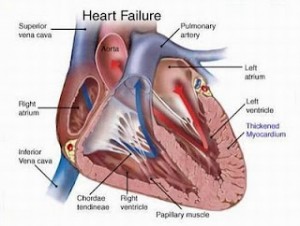Dr Munesh Tomar
What is congenital heart defect? Congenital Heart Defect (CHD) is a defect in the structure of the heart and great vessels of a newborn. One in every 125 babies born (8-10 per 1000 live born) has congenital heart defects, which incidentally, is also the most common birth defect. Many of these children will have curable conditions and with good long-term prognosis. These are primarily seen in newborn, infants and children but in our country it is not uncommon to see grown ups diagnosed for the first time with the uncorrected congenital heart defect primarily because of lack of health awareness and health facilities. Nearly 30% of these defects are critical requiring intervention in early infancy only making congenital heart defect a common cause of infant mortality in India and contributing to about 10% to infant mortality rate.
How to suspect that your child may be suffering with heart defect?
Have you noticed that your baby is blue?
Blueness is an important indicator of heart disease. Blue babies always have severe form of heart disease. Earlier the blueness appears, the more serious is the heart defect. Some of the blue babies are prone to episodes of “Cyanotic spells” characterized by increase in the rate and depth of breathing with increase in blueness. This may go on to limpness, convulsion, or unconsciousness.If there is history suggestive of ‘cyanotic spell’, child needs early intervention.
Does your child get repeated chest infections?
Frequent chest infections may be the only feature of heart disease in a child. Upper respiratory infections like common cold, mild cough or hoarseness are not related to heart disease. Chest infections usually manifest with fever, fast breathing, indrawing of the chest and usually require antibiotics for recovery. More than one episode of lower respiratory tract infection in a year may be the only clue to the existence of congenital heart disease in a child.
Does your child have feeding problems?
Inability to take mother feed at a single stretch especially when associated with sweating is an early manifestation of congenital heart disease. Feeding difficulty is considered to be present if the baby cannot suck from the breast at a stretch for five minutes and becomes breathless during feeds. The baby may also sweat during feeds and stop after taking a small feed. The baby continues to be hungry and cries after every ½ to 1 hour for feeds.
Poor weight gain
Infants with congenital heart disease have poor feeding pattern and unsatisfactory weight gain. With cardiac defects their metabolic rate is high requiring more calories but due to feeding problem their intake is poor leading to poor weight gain. In addition, frequent chest infection leads to further weight compromise.
Have you noticed that your child not able to keep pace with his peer group while playing? This may indicate that a diseased heart cannot cope with the demands during exertion and competitive sports.
What should parents do?
If you notice any of the above symptoms consult a pediatric cardiologist. Detailed cardiac evaluation is must to decide about about timing of intervention. Once you know that your baby has heart disease, don’t feel despondant. Most of the heart disease can be treated.
Do you know that people with congenital heart defects are living longer?
As medical care and treatments have advanced, infants with heart defects are living longer and healthier lives. Many now are living into adulthood. It is important for children and adults living with a congenital heart defect to see a heart doctor regularly throughout their lives.
Do you know that some congenital heart defects can be prevented?
The cause of most congenital heart defects is unknown. Some babies have heart defects because of changes in their genes or chromosomes. They also might be caused by a mix of genes and other risk factors. The Centers for Disease Control and Prevention’s National Birth Defects Prevention Study has found that women who are obese, have diabetes, or smoke during pregnancy increase their chances of having a baby born with a heart defect. A woman can take some important steps before and during pregnancy to help prevent congenital heart defects. She can work to get to and stay at a healthy weight, control diagnosed diabetes, quit smoking, and take folic acid daily. These actions can reduce the risk of having a baby with a congenital heart defect.
Do you know that some heart defects can be found before birth?
Some congenital heart defects can be found before birth by fetal echocardiography. Knowing if a baby has a heart defect before birth can help families plan for the future.
Treatment facilities in India: Over the last 2 decades there is great advancement in facilities for congenital heart defect in India. Many centers have come up with treatment facilities for children with congenital heart defects .Even newborn with critical congenital defects are being treated successfully at these centers with good results .The sad part is that majority of these centers are concentrated in Delhi and in southern part of India and mainly in private sectors .Unfortunately some of the most populous states like Utter Prades, Bihar, Madhya Pradesh, Assam Orissa have no resource for the treatment of these small kids with CHD.Very small number of government hospital have facility for operating on small kids with congenital heart defect. Lack of government policies for the children with CHDs make it difficult to afford the treatment facility available in private sectors.
Need of hour is to make people aware about the problem, its treatment facilities and good outcome if treated on time.
(The author is Senior Consultant Pediatric Cardiologist, Medanta – The Medicity Gurgaon.)



